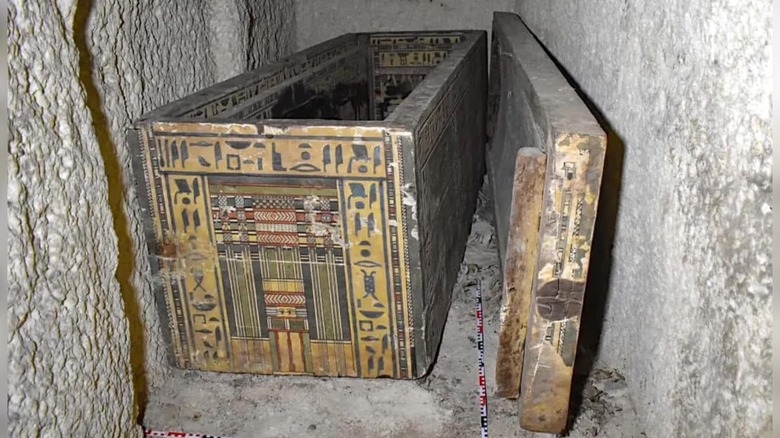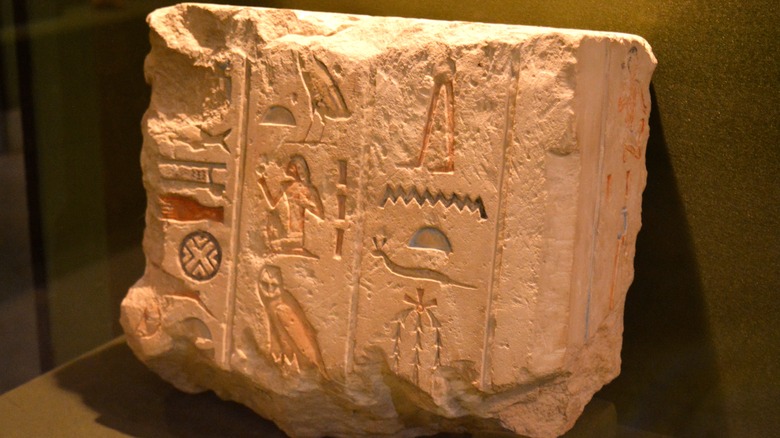The Intricate Coffins That Shed Light On An Overlooked Period Of Egyptian History
A pair of nesting coffins recently uncovered in an ancient Egyptian tomb has shed new light on an era of history that hasn't gotten much attention to this point. In October of 2024, it was revealed that a team of excavators working in the ancient ruins around the city of Asyut discovered a 4,000-year-old tomb with a burial chamber hidden 50 feet below the surface. They determined that the tomb belonged to a woman named Idi, who was the daughter of the ancient Asyut governor, Djefaihapi, whose tomb is located nearby.
Only a small portion of Idi's skeleton was found, leading archaeologists to determine that the tomb must have been robbed at some point in the far distant past. However, the dual coffins that Idi was buried in, one stacked inside the other, are an incredible discovery in their own right. What makes this find so remarkable is the intricate artwork that covers the exterior and interior of the sarcophagi. An extensive series of hieroglyphics reveal detailed instructions to guide the departed to the realm of the dead.
The practice of mummification in ancient Egypt dates back to the early days of the empire, but coffin designs evolved throughout its history. The detailed artwork and hieroglyphic texts found on Idi's sarcophagi are characteristic of Egypt's Middle Kingdom, which brought about some of the empire's greatest creative accomplishments, yet is largely overlooked today.
Life in Egypt's Middle Kingdom
Archaeologists are constantly making new finds, but by this point, we have a pretty clear timeline of the course of Egyptian history, which is divided into different periods. Modern studies of ancient Egypt tend to focus on three of these periods.
The Old Kingdom (2686-2181 B.C.) is legendary as the period during which the pyramids of Giza and the Sphinx were built. It was also the era in which Egyptians mastered artificial mummification, which uses chemicals to preserve bodies. The Egyptian New Kingdom (1550-1069 B.C.) is also well known as the era in which King Tut and Ramses the Great reigned. Perhaps most discussed in the Ptolemaic period of Egypt, which saw Alexander the Great conquer the region, the writing of the Rosetta Stone, and the reign of the last Egyptian ruler, Cleopatra. But sandwiched between the Old and New Kingdoms is a fascinating period.
The Middle Kingdom lasted from roughly 2055 to 1795 B.C. Although it didn't leave us with images as iconic as the pyramids or King Tut's tomb, many Egyptologists actually consider it the height of ancient Egyptian culture. The era was defined by economic prosperity that opened the doors for innovations in the fields of art, literature, and architecture. The stability of the Middle Kingdom may not provide the most dramatic look at Egyptian history, but in terms of cultural achievements, it deserves far more attention.

